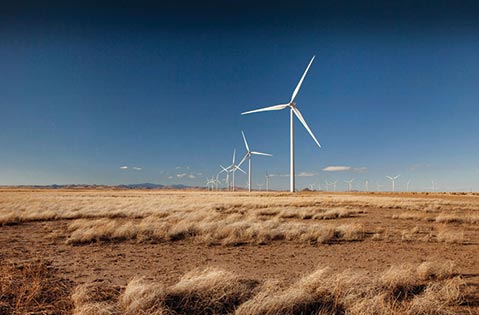Cross-Cultural Collaborators Lead World in Going Green

Germany, the powerhouse of Europe, has led the clean-energy transformation through carefully drafted laws and regulations. California, the Golden State, has powered its renewable energy transformation through a culture of experimentation and entrepreneurship. And while Germany and California have very different cultures, they both share one overarching goal: to develop climate-friendly solutions and programs to curb carbon emissions. Recognizing this common goal, they have become close collaborators, sharing their ideas, successes, and best practices with each other and others around the world.
With nearly 83 million people, Germany has more than twice the population of California. Both are expanding their clean power, especially from wind and solar, to ensure that it accounts for more than a third of all energy generated by 2025. Both want to slash their carbon emissions to 80 percent of 1990 levels by 2050. In spite of these similarities, there are profound differences that reflect their unique cultures, the makeup of their power grids, and the role of government in determining energy policy.
The Germans are amazed at the boundary-pushing culture in California, where risk-taking is almost the norm, supported by navigable corporate laws and abundant venture capital, all of which have created the playing field for the state’s energy transition. Such a laissez-faire approach would be unthinkable in Germany. Policy makers in California, on the other hand, must sometimes envy the amount of control Germany has over renewables and the grid.
The German transformation has been led by detailed government policy. Starting in 2000, the German energy program (called a feed-in tariff) began offering generous payments to anyone generating power through solar, wind, or biomass. But by law, that power had to be fed into the grid. This program is widely viewed as having created a big push to make renewables attractive and more affordable on the global scene. Renewable generators have to share information about how much power they plan to generate so that utility operators can forecast and plan accurately. “Smart” meters that gather and relay energy information are common in Germany and will be required as of this year.
Germany’s policies, however, have come at a price to its citizens: Household monthly power bills have more than doubled since 2000.California, by contrast, has avoided a steep jump in customers utility bills through stringent conservation measures and by inclusive planning involving industry, utilities, and the Public Utilities Commission.
In spite of differences in approach, Germany and California have closely shared their lessons and are serving as learning laboratories for the rest of the world. Perhaps most impressive, both have managed to grow their economies while moving aggressively to transform their energy sectors.



